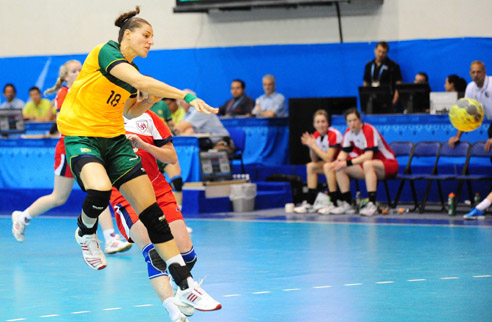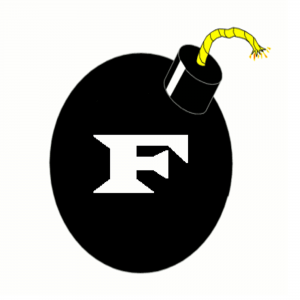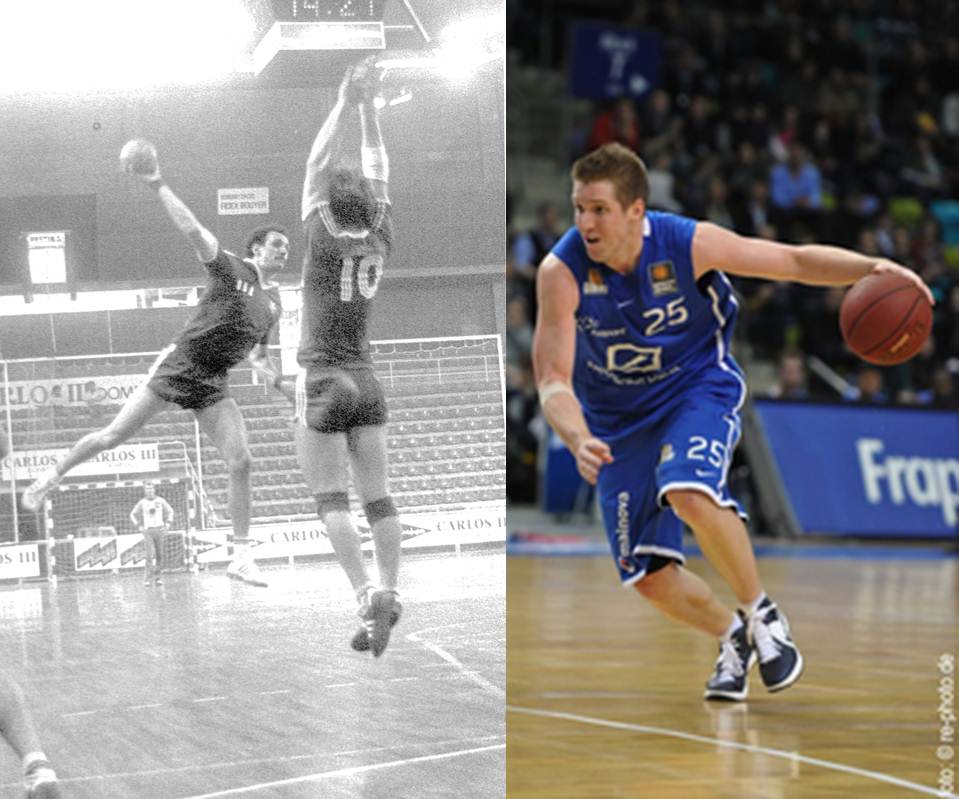
Brazil scoring one of their 50 goals in their 50-10 victory over the USA last year at the PANAM Games. The USA will need to get a lot better if it wants to qualify for the Olympics.
I’m in the process of updating the Frequently Asked Questions (FAQ) page and as this is easily the question of the moment, I thought it worthwhile to answer it. In this first part, I simply review the qualification competition and analyze why the U.S. came up short.
Why aren’t the USA men’s and women’s national teams at the 2012 Olympics?
The simple answer: They didn’t qualify (and they didn’t even come close). There are two paths to qualification for the USA; either via the World Championships or the PANAM Games. It’s a somewhat complicated process and the details are at these links (Men’s 2012 Qualification, Women’s 2012 Qualification). By far, the simplest and easiest way for the USA to have qualified would have been to win the Handball Tournament at the PANAM Games.
At the 2011 PANAM Games the women finished 8th out of 8 teams, failing to win a single match. In pool play they lost to the eventual winner and Olympic qualifier, Brazil by a score of 50-10. There’s no way to sugar coat such a loss as it means that Brazil basically scored at will. In their other 4 games the women were more competitive, but still lost by an average of 7 goals. (Details on PANAM Games Women’s Tournament)
The men fared slightly better and finished 7th out of 8 teams. In pool play they lost 36-19 to the eventual winner and Olympic qualifier, Argentina. Their other pool play and placement matches were relatively close. They lost by 5 goals to eventual 4th place finisher, the Dominican Republic and lost by 1 goal to both Mexico and Canada. In the 7th place game they managed to beat winless Venezuela by 4. These margins of defeat make it abundantly clear that there was no realistic scenario by which either the men or women could have qualified for London. (Details on PANAM Games Men’s Tournament)
Why weren’t the U.S. teams more competitive? The U.S. has never been a world power, but in the 80s and 90s, the U.S. fielded competitive sides that were able to earn qualification to the Olympics. What happened? Why the lopsided scores? As this is just the first of two parts, I’ll first give the direct causes of failure. In thinking about how to best capture this I came up with 5 key areas that factor into how good a team is. These 5 key factors are:
1) Raw athletic talent
2) Conditioning
3) Individual technique/skills
4) Team cohesion/experience
5) Coaching strategy/preparation
So here’s my assessment of our current national teams and where they stand, both in comparison to their current competition and USA teams of the 80s and 90s. (Side Note: If this assessment comes across as a cranky old timer who thinks former USA teams walked on water, let me be clear on a couple of things. I, personally was a border line national team player on a team that only was able to eke out a win and a draw in my 12 International Game; And those were against Canada. Translation: I am a has been, that never was. Going further, no USA team has ever been good enough to beat the top teams of Europe in World Championship or Olympic competition.
1) Raw athletic talent. If you can jump higher, throw harder and move quicker than your opponent you will have a distinct advantage. For many years, U.S. teams compensated for their lack of technical skill with superior athletic talent drawn from our sizable population
USA Women: With the Women’s team, I would assess that only one player (Jennifer Fithian) to have the type of raw talent that would compare with our former Olympic teams. Karoline Borg comes close and would “have a chance” to make the roster, but mostly based on her strong technical skill. Against current PATHF competition they are totally outgunned by Brazil. The gap with the rest of PATHF, however, isn’t as bad, but they still are at a disadvantage.
USA Men: The men’s team is a bit stronger in this department. Clearly backcourts Gary Hines and Adam El Zogby have the raw talent. (Although, Hines would have to play wing instead of back.) From what I’ve seen Jordan Fithian may have the raw talent, but it’s not as clear cut. The rest of the roster is filled with some decent talent, but in a competitive environment for roster slots comparable to the 80s and 90s most would come up short. Against their current competition in PATHF, however, they only have a slight handicap against Argentina/Brazil and have better raw talent than the other also-rans.
2) Conditioning. Team Handball is a physically demanding game and if athletes are out of shape it can make a big difference. Former USA Olympic team might have come up short technically, but rarely were they out hustled.
USA Women: The U.S. Women’s team was clearly lacking in this area and this certainly played a role in the final score line of their matches.
USA Men: The USA Men seemed to be OK in this department. Although, perhaps a little better conditioning could have helped the team to overcome some rough patches in close matches.
3) Individual technique/skills: While Team Handball is a relatively easy game to learn, it can be a challenging game to master. Despite extensive full time training (often for several years) former USA Olympic teams were always outmatched in this area by European teams. In the 80s and 90s it was a rare occurrence for a USA team to be technically outmatched by their PATHF competition, but several PATHF nations have since made significant gains in training and development.
USA Women: On the women’s side, arguably only one player, leading scorer and Swedish-American, Karoline Borg, has fully mastered the finer points of the game. Several other players have made significant progress, but still have a ways to go in this department. The current USA team is technically weaker than our former Olympic teams, but this is due to substantially fewer training opportunities. And slippage against PATHF competition is also attributable to improved training in development in those nations.
USA Men: Several players, primarily dual citizen athletes, are pretty sound technically. Gary Hines is arguably the most technically developed American player that didn’t also have the benefit of training as part of a fully established USA residence program. The American born players aren’t as strong technically for the same reasons mentioned in the women’s section.
4) Team cohesion/experience. Team Handball, as the name indicates, is a “team” game. How the different individual players combine their talents to form a cohesive team can make all the difference. Additionally, teams that have played together for years have a distinct advantage in that the players are familiar with each other’s moves, strengths and weaknesses. Former USA Olympic teams were very cohesive in that they trained and, in many instances, lived together for several years. USA teams in the past also had the advantage of periodic overseas trips for competition.
USA Women: The core of the USA Women’s team is a pretty cohesive unit having trained together at Cortland University from 2004-2007. Since 2007, however, there have only been a few training camps prior to competition for World Championship or Olympic qualification. There is no comparison to the advantages that former USA teams had in this area. Additionally, several PATHF programs now have regular training and overseas trips for competition.
USA Men: The Men’s team is even more handicapped in this department as players often met each other for the first time at the short training camps prior to competition. The team has done as good as job as can be expected in this department, but they are clearly lacking opportunities to play together as a team. This has put them at a distinct disadvantage against several PATHF foes where those teams have played dozens of games together.
5) Coaching Strategy/Preparation. A good coach can make any team a little bit better with good X’s and O’s strategy during the match and by preparing his team with a good scouting report on the opposition. USA Olympic teams in the past had full time coaches and in most instances they were experienced European coaches with good track records.
USA Women/USA Men: Both the current men’s and women’s teams do not have permanent head coaches. Instead coaches have been hired prior to competition. It’s difficult to assess the performance of these coaches without being more closely involved in the program. Additionally, as part time coaches with inadequate resources it’s difficult to find great fault with their efforts. In terms of the PATHF programs, Brazil has had full time European coaches in recent years and I suspect that Argentina and Chile’s coaches also receive more consistent support from their federations.
Summary
It’s possible that a team can compensate for a weakness in any of these areas. I’ve seen superior raw athletic talent trump weak technical skills and I’ve also seen the reverse happen. I’ve seen inexperienced teams do well with a good coach, and again I’ve seen the reverse as well. But, if you are at a disadvantage in all 5 areas (Women) and 4 out of 5 (Men) there’s simply no way you can expect anything but poor results.
Of course, there are a number of obvious steps that could be taken to improve in all of these areas. If you need better raw talent, then do a better job of recruiting. If your players are technically weak, well then train them to be better, etc., etc., All of this, however, is easier said than done. In part 2, I’ll tackle the underlying reasons as to why the USA has struggled to field better teams and qualify for the Olympics.























